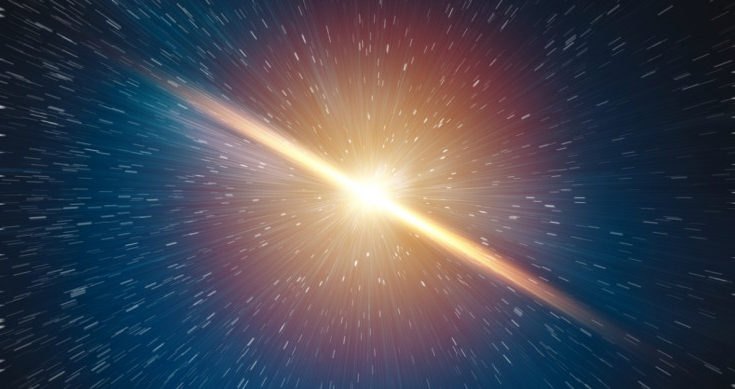Wielding state-of-the-art technologies and procedures, a group of Clemson University astrophysicists has added a novel way to deal with evaluating one of the most crucial laws of the universe.
In a paper distributed Friday, Nov. 8, in The Astrophysical Journal, Clemson researchers Marco Ajello, Abhishek Desai, Lea Marcotulli and Dieter Hartmann have worked together with six different researchers around the globe to devise another estimation of the Hubble Constant, the unit of measure used to depict the pace of extension of the universe.
“Cosmology is about understanding the evolution of our universe—how it evolved in the past, what it is doing now and what will happen in the future,” said Ajello, a partner teacher in the College of Science’s division of material science and astronomy. “Our knowledge rests on a number of parameters—including the Hubble Constant—that we strive to measure as precisely as possible. In this paper, our team analyzed data obtained from both orbiting and ground-based telescopes to come up with one of the newest measurements yet of how quickly the universe is expanding.”
The idea of a growing universe was progressed by the American stargazer Edwin Hubble (1889-1953), who is the namesake for the Hubble Space Telescope. In the mid twentieth century, Hubble got one of the principal space experts to derive that the universe was made out of numerous cosmic systems. His resulting research prompted his most eminent disclosure: that systems were moving ceaselessly from one another at a speed with respect to their separation.
Hubble initially evaluated the development rate to be 500 kilometers for every second per megaparsec, with a megaparsec being identical to about 3.26 million light years. Hubble inferred that a world two megaparsecs away from our cosmic system was subsiding twice as quick as a universe only one megaparsec away. This gauge got known as the Hubble Constant, which demonstrated just because that the universe was growing. Space experts have been recalibrating it—with blended outcomes—from that point forward.
With the assistance of soaring innovations, space experts thought of estimations that contrasted altogether from Hubble’s unique figurings—backing the extension rate off to somewhere in the range of 50 and 100 kilometers for every second per megaparsec. What’s more, in the previous decade, ultra-refined instruments, for example, the Planck satellite, have expanded the exactness of Hubble’s unique estimations in moderately dramatic fashion.
In a paper titled “A New Measurement of the Hubble Constant and Matter Content of the Universe using Extragalactic Background Light-Gamma Ray Attenuation,” the community oriented group looked at the most recent gamma-beam weakening information from the Fermi Gamma-beam Space Telescope and Imaging Atmospheric Cherenkov Telescopes to devise their appraisals from extragalactic foundation light models. This tale technique prompted an estimation of around 67.5 kilometers every second per megaparsec.
Gamma beams are the most fiery type of light. Extragalactic foundation light (EBL) is a vast mist made out of all the bright, obvious and infrared light discharged by stars or from dust in their region. At the point when gamma beams and EBL communicate, they leave a perceptible engraving – a slow loss of stream—that the researchers had the option to investigate in defining their theory.
“The astronomical community is investing a very large amount of money and resources in doing precision cosmology with all the different parameters, including the Hubble Constant,” said Dieter Hartmann, an educator in material science and astronomy. “Our understanding of these fundamental constants has defined the universe as we now know it. When our understanding of laws becomes more precise, our definition of the universe also becomes more precise, which leads to new insights and discoveries.”
A typical similarity of the development of the universe is an inflatable dabbed with spots, with each spot speaking to a cosmic system. At the point when the inflatable is exploded, the spots spread more distant and more distant separated.
“Some theorize that the balloon will expand to a particular point in time and then re-collapse,” said Desai, an alumni look into right hand in the branch of material science and stargazing. “But the most common belief is that the universe will continue to expand until everything is so far apart there will be no more observable light. At this point, the universe will suffer a cold death. But this is nothing for us to worry about. If this happens, it will be trillions of years from now.”
However, on the off chance that the inflatable similarity is precise, what is it, precisely, that is exploding the inflatable?
“Matter – the stars, the planets, even us—is just a small fraction of the universe’s overall composition,” Ajello clarified. “The large majority of the universe is made up of dark energy and dark matter. And we believe it is dark energy that is ‘blowing up the balloon.’ Dark energy is pushing things away from each other. Gravity, which attracts objects toward each other, is the stronger force at the local level, which is why some galaxies continue to collide. But at cosmic distances, dark energy is the dominant force.”
The other contributing creators are lead creator Alberto Dominguez of the Complutense University of Madrid; Radek Wojtak of the University of Copenhagen; Justin Finke of the Naval Research Laboratory in Washington, D.C.; Kari Helgason of the University of Iceland; Francisco Prada of the Instituto de Astrofisica de Andalucia; and Vaidehi Paliya, a previous postdoctoral scientist in Ajello’s gathering at Clemson who is presently at Deutsches Elektronen-Synchrotron in Zeuthen, Germany.
“It is remarkable that we are using gamma rays to study cosmology. Our technique allows us to use an independent strategy—a new methodology independent of existing ones—to measure crucial properties of the universe,” said Dominguez, who is also a former postdoctoral researcher in Ajello’s group. “Our results show the maturity reached in the last decade by the relatively recent field of high-energy astrophysics. The analysis that we have developed paves the way for better measurements in the future using the Cherenkov Telescope Array, which is still in development and will be the most ambitious array of ground-based high-energy telescopes ever.”
A large number of similar strategies utilized in the present paper connect to past work directed by Ajello and his partners. In a previous task, which showed up in the diary Science, Ajello and his group had the option to gauge the entirety of the starlight at any point discharged throughout the entire existence of the universe.
“What we know is that gamma-ray photons from extragalactic sources travel in the universe toward Earth, where they can be absorbed by interacting with the photons from starlight,” Ajello said. “The rate of interaction depends on the length that they travel in the universe. And the length that they travel depends on expansion. If the expansion is low, they travel a small distance. If the expansion is large, they travel a very large distance. So the amount of absorption that we measured depended very strongly on the value of the Hubble Constant. What we did was turn this around and use it to constrain the expansion rate of the universe.”
Disclaimer: The views, suggestions, and opinions expressed here are the sole responsibility of the experts. No Just Examiner journalist was involved in the writing and production of this article.




